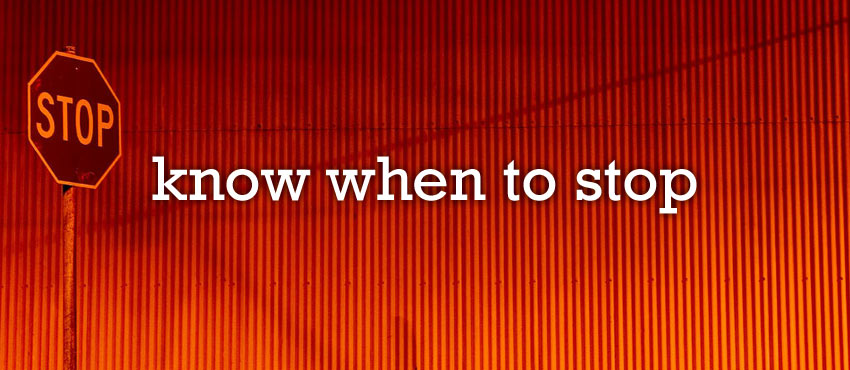The worst possible way to jeopardize your entrepreneurial career is to hang on a dying business, which suck the life out your financial resources. How can I be so sure about this? Well, read on…

Let me tell you my favorite entrepreneurial true story.
There is a guy with a simple but big dream: His dream was to become an entrepreneur and be financially independent to retire early.
Of many possible entrepreneurial paths, he chose franchising for 2 major reasons: Firstly, he didn’t have any entrepreneurial experience. Secondly, he wanted to take a short cut, “borrowing” the expertise of the franchisor.
He visited franchise expos, and shortlist dozens – if not hundreds – of franchise opportunities. As he was pitched that franchises generally have lower failure rate, he finally embarked in his journey; borrowing money from his family, he launched his store.
It was a great store; the franchisor is one of the national leaders in franchising, and the best in its niche (business service.) The brand is well known, and only weeks after he opened the store, customers started to flock into the store.
In less than 6 months, the store reached the break-even point; things were going smoothly. Then he borrowed yet more money to finance a second location. This second location was not as good as the first location; it was poorly performing and it didn’t manage to compete with local, long established competitors – both franchise and non-franchise.
Just about 2 years after he embarked in his franchising journey, the financial disaster fall upon his stores. Hard-hitting global recession slows down business. Not stopping there, mismanagement and conflicts with his franchisor – mainly over obsolete business model and lack of innovation – have worsened the situation.
He waited for 2 more years before he finally closed down the latter location and sell the first location back to the franchisor. He went into a near personal-bankruptcy, and thanks to his next business venture, he escaped it.
Okay, pretty fascinating story, no? If you wonder where I get that story from, the answer is pretty simple: It’s MY story.
Yes, that’s my biggest failure in entrepreneurship (make that two failures, as I lost 2 stores) and I learn from them enormously.
Now let’s go back to the topic of this blog post: There are some critical mistakes I made in my franchising gig, but the worst of all is my persistence in hanging on to my stores.
It took me 2 years to finally realize that I can’t save my business. I was run out of money; I was broke; and to make matters worse, I lose the money I borrow from my family. Finally, I stopped all the madness and I call it quit.
Assessing the damages, it’s easy to spot my mistakes: I tried to turn things around, but I should be able to tell that financially, the business can’t survive: 6 months before I sell a store back to my franchisor, I asked for my franchisor to manage my store. No results; everything is just the same. I should divest earlier.
I should stop earlier. I should know when to stop.
Knowing when to stop is easy – but…
It’s really easy to see the “signs of times”… but the biggest issues is: When to really stop?
Okay, first things first; you know at a glance that your business is dying. Well, if you don’t let me tell you these two of the signs that it’s time for you to stop:
1. You have transformed the way your business run, but no results
When you do things differently, you can expect things change. If not, there’s gotta be external issues, such as local economic issues… new, more competitive competitors… change in regulations…
Even simpler, just look at your revenue figures and if you don’t see things go for the better, then you are still doing things wrong.
2. You are profitable, but have no cash flow
On paper, the business is actually doing pretty well: Despite all the problems, it’s still recording profits. However, at the end of the month, I always lose money. I even can’t pay a salary for myself. In fact, I borrow more money just to get the business afloat.
What gives?
It’s simple. Cash flow is king. No matter how profitable you are, with no cash in your account, you literally have no money. Pretty straightforward, really.
Yes, it’s possible to be profitable but have no money in your account: Too many account receivables… bad clients’ and/or suppliers’ payment terms… and so on.
When you feel that those two lingers in your entrepreneurial journey, then you need to consider an exit strategy.
Exiting when your business is going down to the gutter is painful, indeed. But it’s a must do. Many suggest that we should hang on and keep on fighting to the end with our business… well, I learn that those are not always the best advice you should follow.
You need to know when to stop. And when you’ve seen the “sign of times” take action, don’t wait.
Takeaway
Listen – being resilient and persistent is great. But being resilient and persistent for the wrong reason is bad. Really bad. Keep on doing things wrong, while hoping that things will change for the better, is the worst you can do for your entrepreneurial journey. How so?
You will run out of money, eventually. You will deplete your financial resources, eventually. And when you don’t have more options, your business will eventually be closed down. So, why don’t you just cut the chase of your “dream” business, refocus, and chase another dream business, instead of hanging on false hope?
I wish I was changing direction sooner; I lost not my most valuable investment of all – time – but also my money trying to hang on my dying business. I wasted 2 years, and finally stopped chasing that dream of mine and start chasing a new one.
Let’s just say that today, I’m living a dream life, doing what I love to do, working at home or anywhere I want, anytime. I wish I started this kind of business 2 years earlier. But hey, lessons learned and I hope that this blog post can be a revelation for you.
God bless you in your entrepreneurial journey!
Ivan Widjaya
Founder/CEO Biz Penguin
Photo credit: Thomas Hawk via photopin cc



